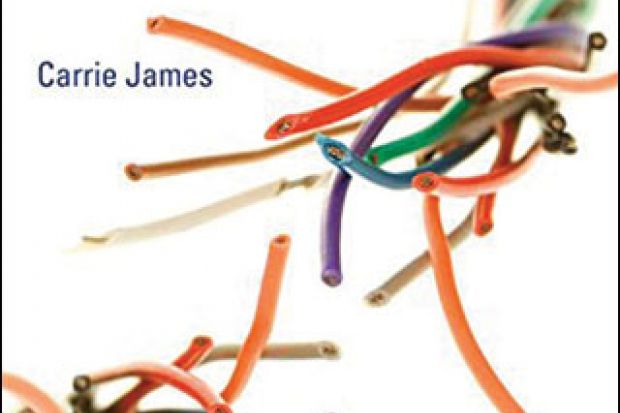Digitisation is a cause, outcome and explanation for sexual, social and political change. When in doubt, celebrate or blame the internet. In the first optimistic iteration of this narrative – best captured by Sherry Turkle’s Life on the Screen: Identity in the Age of the Internet (1995) – the internet offered an end to racism, ableism and superficial intimacies based on bodies rather than bytes. But after 11 September 2001, the internet became an incubator and platform for terrorism, radicalism and beheadings.
Carrie James has entered this overworked intellectual space in Disconnected: Youth, New Media, and the Ethics Gap. American university presses have filled their lists exposing the “threat” of new media. But what renders this short book superior to the usual “young people are out of our control” diatribe is its focus on the ethics of online participation.
This research is cut and remixed from a larger project funded by the John D. and Catherine T. MacArthur Foundation’s Digital Media and Learning programme. This wider study probed the “fault times” of identity, credibility, privacy, property and participation; here, James investigates the morality and ethics of digital life, with particular attention to the disconnections between beliefs and actions.
As with many recent publications, “young people” are interviewed, seemingly to capture their authentic voice. These studies always feel like a Bob Dylan press conference from 1965, where old(er) journalists tried either to be down with the kids or to mourn social change as the decline of civilisation.
The book becomes more valuable when it moves beyond these interviews and considers wider digitally enabled social fractures. These include the suicide of Tyler Clementi, who jumped off New York’s George Washington Bridge after the discovery that a college roommate had set up a webcam to record and upload his sexual encounters; and the Steubenville rape case, in which mobile phone footage and photographs of multiple assaults carried out on a drunk and unconscious teenage girl were uploaded to Facebook, Instagram and Twitter.
Digitisation was not the cause of these dreadful events, but it did intensify them for both the victims and the perpetrators. Such actions also created a wider and amplified audience of rubbernecking digital “followers” who encourage, condone or accept the unacceptable and often unthinkable.
James recognises these digital dilemmas and interrogates “young people” on their choices and decisions about privacy. She asks how and why participants and voyeurs of digital humiliations can so easily park the consequences of their choices and “how we might narrow the ethics gap and cultivate more conscious, and conscientious, ways of being digital”. A greater question is how empathy, respect and consideration for others is valued and promoted amid the bullying, trolling, ageism, sexism, xenophobia and body dysmorphia.
Too often the screen is a barrier that both permits and excuses the humiliation of children and adults who already suffer analogue injustice. The long-term consequences of both sharing and – in the case of celebrities such as the Kardashians – marketing privacy is yet to be revealed. The challenge in and with James’ book is that wider social movements are reduced to “the young people”. The problem – and opportunity – is that most social media sites exist for sharing. The key is in the adjective: social. Tagging a drunken friend in a photograph on Facebook so that their family and friends can laugh at their behaviour may seem harmless. The cost of such connectivity is privacy.
Disconnected also offers commentary about remixing and plagiarism. James notes that nearly half of all contributions to Wikipedia are made by people aged 10 to 21. Therefore, the nature of online writing, originality and authorship is a key debate among her interviewees. For example, a 10-year-old reported to researchers that copying content does not matter if the person is not being paid for the resultant writing. While Turnitin may discover and penalise such behaviour, the question is how it has emerged in the first place and how formal education can value imagination, creativity and intellectual generosity.
Digital media encourage – seemingly in tandem – community and isolation. The proliferation of cruelty when hiding behind a screen ensures that James’ fifth chapter, “Correcting the blind spots, reconnecting the disconnects”, is the most important.
This is a short book of value, particularly if one looks beyond its small sample of interviews that assume that the US is representative of the world. Only when respecting the diversity of histories, geographies and identities may digitisation live up to at least some of the hopes of those early evangelical theorists.
Disconnected: Youth, New Media, and the Ethics Gap
By Carrie James
MIT Press, 200pp, £17.95
ISBN 9780262028066 and 2325554 (e-book)
Published 28 November 2014
Register to continue
Why register?
- Registration is free and only takes a moment
- Once registered, you can read 3 articles a month
- Sign up for our newsletter
Subscribe
Or subscribe for unlimited access to:
- Unlimited access to news, views, insights & reviews
- Digital editions
- Digital access to THE’s university and college rankings analysis
Already registered or a current subscriber? Login

